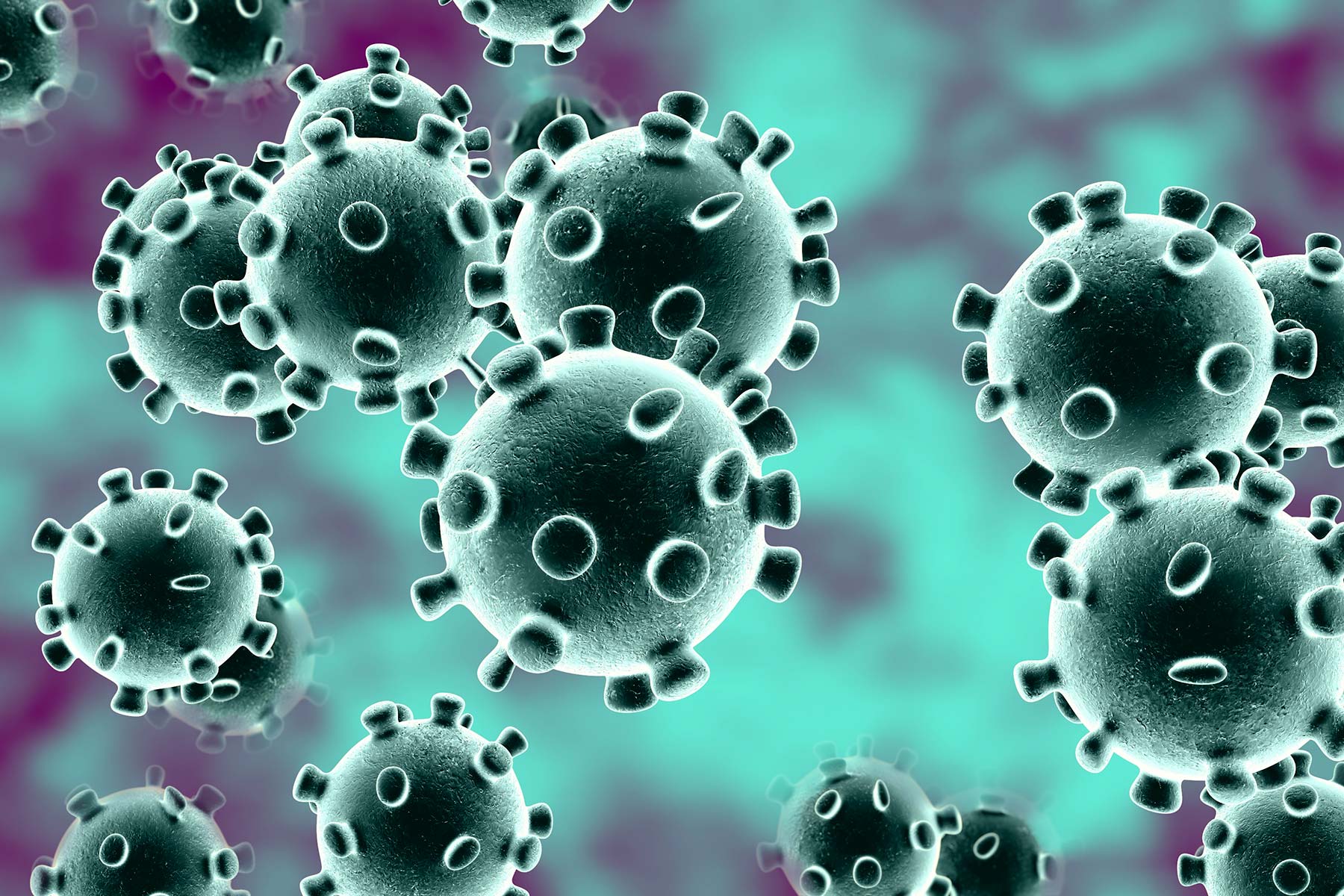Ademola Orunbon
What began with a handful of mysterious illness in a vast central China city has travelled the world, jumping from animals to humans and from obscurity to international headlines? First detected on the last day of 2019, the novel coronavirus has infected tens of thousands of people-within China’s borders and beyond them – and has killed more than 8,272. It has triggered unprecedented quarantines, stock market upheaval and dangerous conspiracy theories. Indeed, most cases are mild, but health officials say the virus’s spread through the United States appears inevitable. As the country and its health-care system prepares, much is still unknown about the virus that causes the disease now named COVID-19.
There are many compelling reasons to conclude that SARS-CoV-2, the virus that causes COVID-19, is not nearly as deadly as is currently feared. But COVID-19 panic has set in nonetheless. You can’t find hand sanitizer in stores, and N300 face masks are being sold online for exorbitant prices, never mind that neither is the best way to protect against the virus (yes, just wash your hands). The public is behaving as if this epidemic is the next Spanish flu, which is frankly understandable given that initial reports have staked COVID-19 mortality at about 2–3 percent, quite similar to the 1918 pandemic that killed tens of millions of people.
Allow me to be the bearer of good news. These frightening numbers are unlikely to hold. The true case fatality rate, known as CFR, of this virus is likely to be far lower than current reports suggest. Even some lower estimates, such as the 1 percent death rate recently mentioned by the directors of the National Institutes of Health and the Centers for Disease Control and Prevention, likely substantially overstate the case. We shouldn’t be surprised that the numbers are inflated. In past epidemics, initial CFRs were floridly exaggerated. For example, in the 2009 H1N1 pandemic some early estimates were 10 times greater than the eventual CFR, of 1.28 percent. Epidemiologists think and quibble in terms of numerators and denominators—which patients were included when fractional estimates were calculated, which weren’t, were those decisions valid—and the results change a lot as a result. We are already seeing this.
In the early days of the crisis in Wuhan, China, the CFR was more than 4 percent. As the virus spread to other parts of Hubei, the number fell to 2 percent. As it spread through China, the reported CFR dropped further, to 0.2 to 0.4 percent. As testing begin to include more asymptomatic and mild cases, more realistic numbers are starting to surface. New reports from the World Health Organization (WHO) that estimate the global death rate of COVID-19 to be 3.4 percent, higher than previously believed, is not cause for further panic. This number is subject to the same usual forces that we would normally expect to inaccurately embellish death rate statistics early in an epidemic. If anything, it underscores just how early we are in this.
But the most straightforward and compelling evidence that the true case fatality rate of SARS-CoV-2 is well under 1 percent comes not from statistical trends and methodological massage, but from data from the Diamond Princess cruise outbreak and subsequent quarantine off the coast of Japan. A quarantined boat is an ideal—if unfortunate—natural laboratory to study a virus. Many variables normally impossible to control are controlled. We know that all but one patient boarded the boat without the virus. We know that the other passengers were healthy enough to travel. We know their whereabouts and exposures. While the numbers coming out of China are scary, we don’t know how many of those patients were already ill for other reasons. How many were already hospitalized for another life-threatening illness and then caught the virus? How many were completely healthy, caught the virus, and developed a critical illness? In the real world, we just don’t know.
Here’s the problem with looking at mortality numbers in a general setting: In China, 9 million people die per year, which comes out to 25,000 people every single day or around 1.5 million people over the past two months alone. A significant fraction of these deaths results from diseases like emphysema/COPD, lower respiratory infections, and cancers of the lung and airway whose symptoms are clinically indistinguishable from the nonspecific symptoms seen in severe COVID-19 cases. And, perhaps unsurprisingly, the death rate from COVID-19 in China spiked precisely among the same age groups in which these chronic diseases first become common. During the peak of the outbreak in China in January and early February, around 25 patients per day were dying with SARS-CoV-2. Most were older patients in whom the chronic diseases listed above are prevalent. Most deaths occurred in Hubei province, an area in which lung cancer and emphysema/COPD are significantly higher than national averages in China, a country where half of all men smoke. How doctors were supposed to sort out which of those 25 out of 25,000 daily deaths were solely due to coronavirus, and which were more complicated? What we need to know is how many excess deaths this virus causes.
This is where the Diamond Princess data provides important insight. Of the 3,711 people on board, at least 705 have tested positive for the virus (which, considering the confines, conditions, and how contagious this virus appears to be, is surprisingly low). Of those, more than half are asymptomatic, while very few asymptomatic people were detected in China. This alone suggests a halving of the virus’s true fatality rate. On the Diamond Princess, six deaths have occurred among the passengers, constituting a case fatality rate of 0.85 percent. Unlike the data from China and elsewhere, where sorting out why a patient died is extremely difficult, we can assume that these are excess fatalities—they wouldn’t have occurred but for SARS-CoV-2. The most important insight is that all six fatalities occurred in patients who are more than 70 years old. Not a single Diamond Princess patient under age 70 has died. If the numbers from reports out of China had held, the expected number of deaths in those under 70 should have been around four.
The data from the Diamond Princess suggest an eightfold lower mortality amongst patients older than 70 and threefold lower mortality in patients over 80 compared to what was reported in China initially. But even those numbers, 1.1 percent and 4.9 percent respectively, are concerning. But there’s another thing that’s worth remembering: These patients were likely exposed repeatedly to concentrated viral loads (which can cause worse illness). Some treatments were delayed. So even the lower CFR found on the Diamond Princess could have been even lower, with proper protocols. It’s also worth noting that while cruise passengers can be assumed to be healthy enough to travel, they actually tend to reflect the general population, and many patients with chronic illnesses go on cruises. So, the numbers from this ship may be reasonable estimates.
This all suggests that COVID-19 is a relatively benign disease for most young people and a potentially devastating one for the old and chronically ill, albeit not nearly as risky as reported. Given the low mortality rate among younger patients with coronavirus—zero in children 10 or younger among hundreds of cases in China, and 0.2-0.4 percent in most healthy nongeriatric adults (and this is still before accounting for what is likely to be a high number of undetected asymptomatic cases)—we need to divert our focus away from worrying about preventing systemic spread among healthy people—which is likely either inevitable, or out of our control—and commit most if not all of our resources toward protecting those truly at risk of developing critical illness and even death: everyone over 70, and people who are already at higher risk from this kind of virus.
This still largely comes down to hygiene and isolation. But in particular, we need to focus on the right people and the right places. Nursing homes, not schools. Hospitals, not planes. We need to up the hygienic and isolation ante primarily around the subset of people who can’t simply contract SARS-CoV-2 and ride it out the way healthy people should be able to.
Coronavirus in Nigeria, just as in some other African countries, has fortunately not spread the way we feared it would. This has baffled even the WHO. However, a Nigerian, who returned from the United Kingdom last two weeks Friday, has tested positive for the new coronavirus, Lagos State Ministry of Health said on Tuesday? “She is clinically stable and is being treated at the Infectious Disease Hospital, Lagos,” Nigeria’s health minister Dr. Osagie Ehanire said. Also, the Lagos State health ministry said the patient, a 30-year-old Nigerian female, observed self-isolation, developed symptoms and tested positive for the coronavirus.
Nigerians on Twitter are beginning to say government should impose a travel ban in Nigeria with the hashtag #NigeriaNeedsATravelBan. With the first case being from someone who flew into the country and now this, it is no surprise that this is being demanded out of the fear that the virus could spread. But, the government claims to have started looking into the people she had contact with such as the passengers she was on the same flight with. Yes, this disease is real. And, yes, there truly do appear to be vulnerable patients among us, those far more likely to develop critical illness from it. And that relatively small subset, if infected in high numbers, could add up to a tragically high number of fatalities if we fail to adequately protect them.
Now, Nigeria has confirmed five new cases of the coronavirus in four weeks but not recorded any death. The latest cases bring the total confirmed cases so far to eight. All five cases had a travel history to the UK and USA according to the Nigeria Centre for Disease Control (NCDC). The agency also implored Nigerians to remain calm as public health response activities are intensified across the country. “A detailed travel history of each case is being compiled and contact tracing has begun, Our National Emergency Operation Centre is supporting response in the states. The Federal Government of Nigeria has also suspended the issuance of visas on arrival to travelers from these countries (the affected countries),” said Chikwe Ihekwazu Director General NCDC.
We have learnt that Nigeria has placed travel restrictions to 13 countries. The countries include China, Italy, Iran, South Korea, Spain, Japan, France, Germany, the United States of America, Norway, the United Kingdom, Netherlands and Switzerland. Now, all travelers returning from these countries prior to the restriction will be in supervised self-isolation, monitored by Nigeria Centre for Disease Control (NCDC) and Port Health Services which could also curb the spread of coronavirus in the country. Indeed, Nigeria is country which usually take the precautionary motive with levity, otherwise we might not have being recorded more than one, the country can closed the land borders for almost one and half years not but could not as well take necessary measure to secure our air ports from being infected or imported the virus into the country.
The good news is that we have huge advantages to leverage: We already know all of this and have learned it remarkably quickly. We know how this virus spreads. We know how long people are contagious. We know who the most vulnerable patients are likely to be, and where they are. Healthy people who are hoarding food, masks, and hand sanitizer may feel like they are doing the right thing. But, all good intentions aside, these actions probably represent misdirected anxieties. When such efforts are not directly in service of protecting the right people, not only do they miss the point of everything we have learned so far, they may actually unwittingly be squandering what have suddenly become precious and limited resources.
Orunbon, a journalist and public affairs analyst, writes in from Abeokuta, Ogun State, Can be reached via: orunbonibrahimademola@gmail.com or 08034493944 and 08029301122.


